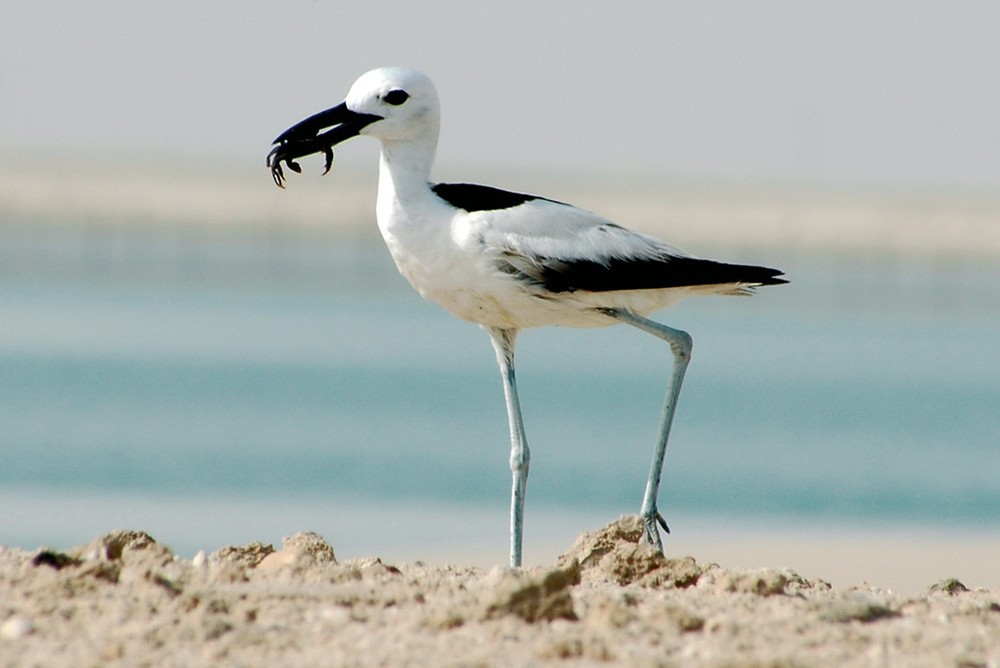Description
The Crab Plover is unmistakable with its black and white plumage and massive black bill. During the hot summer, large numbers of breeding birds converge at two island breeding sites in Abu Dhabi. At the colony, a long 1.5- 2 metre long burrow is excavated. The birds do not incubate the eggs; they are turned a few times a day till the chicks hatch. They feed on crabs that are found in plenty near the breeding colonies. At the end of breeding, all the birds move east towards the northern emirates where some winter, while other disperse into the Indian Ocean. Some birds tagged in Abu Dhabi have been found to fly up to the Seychelles!

